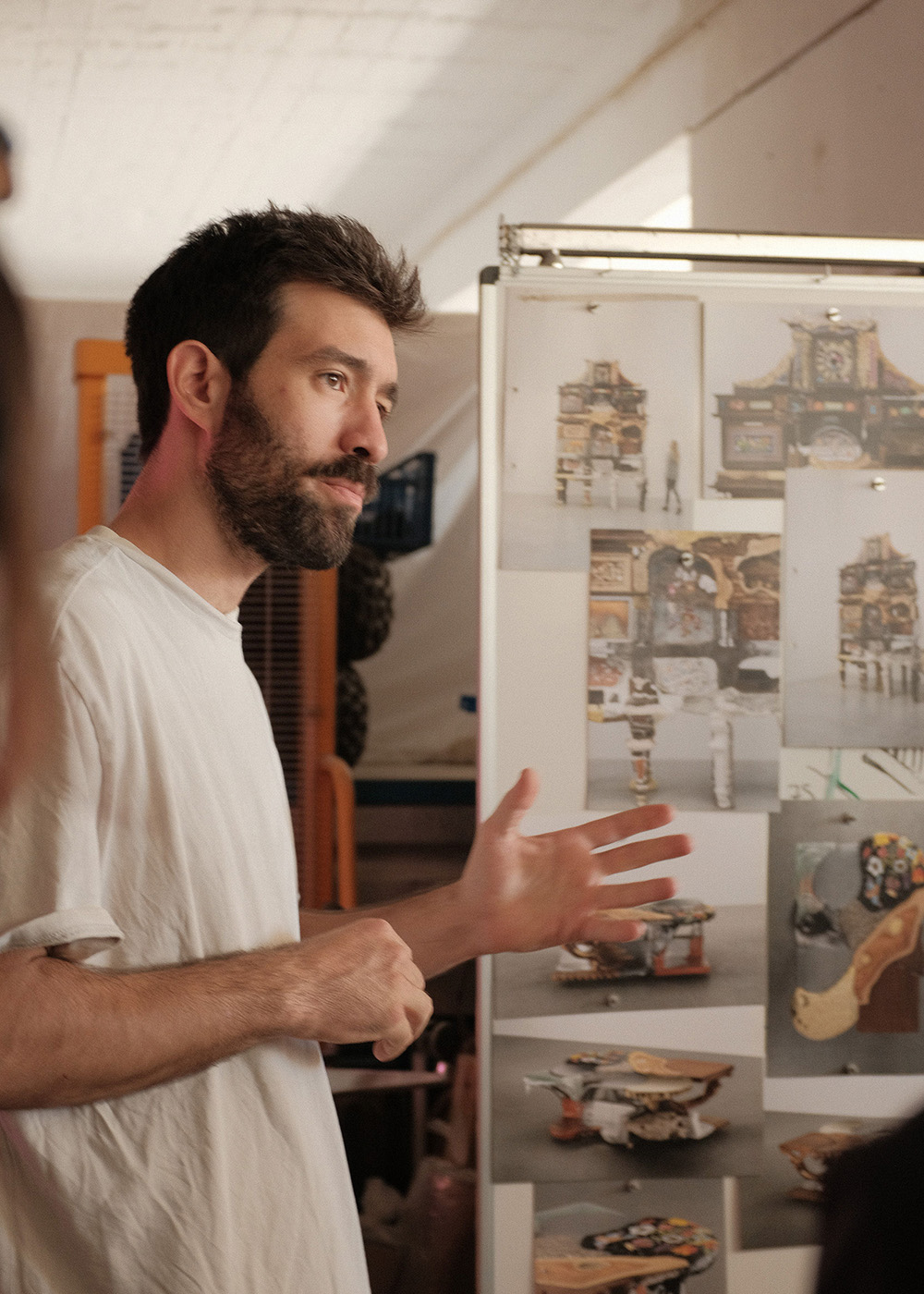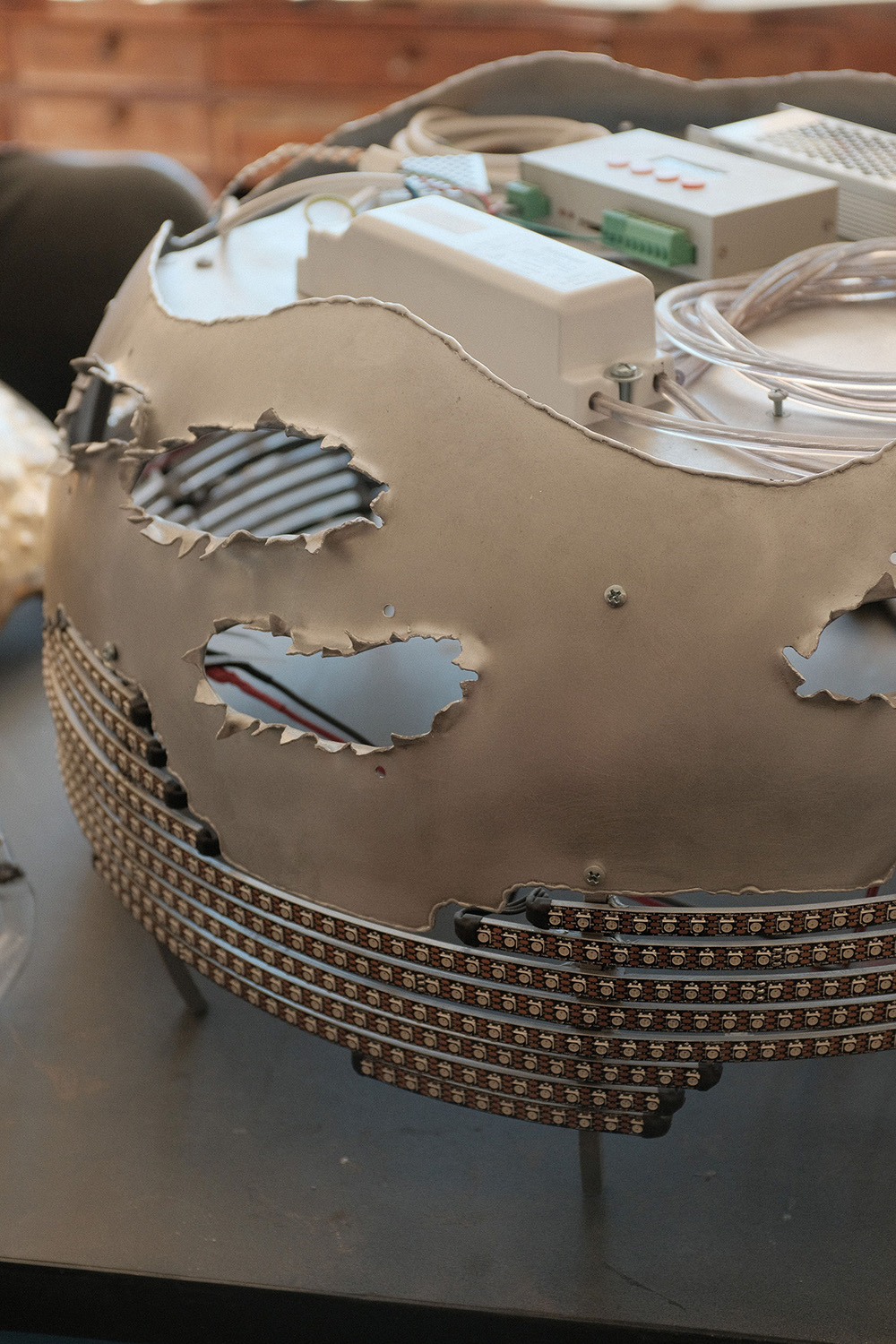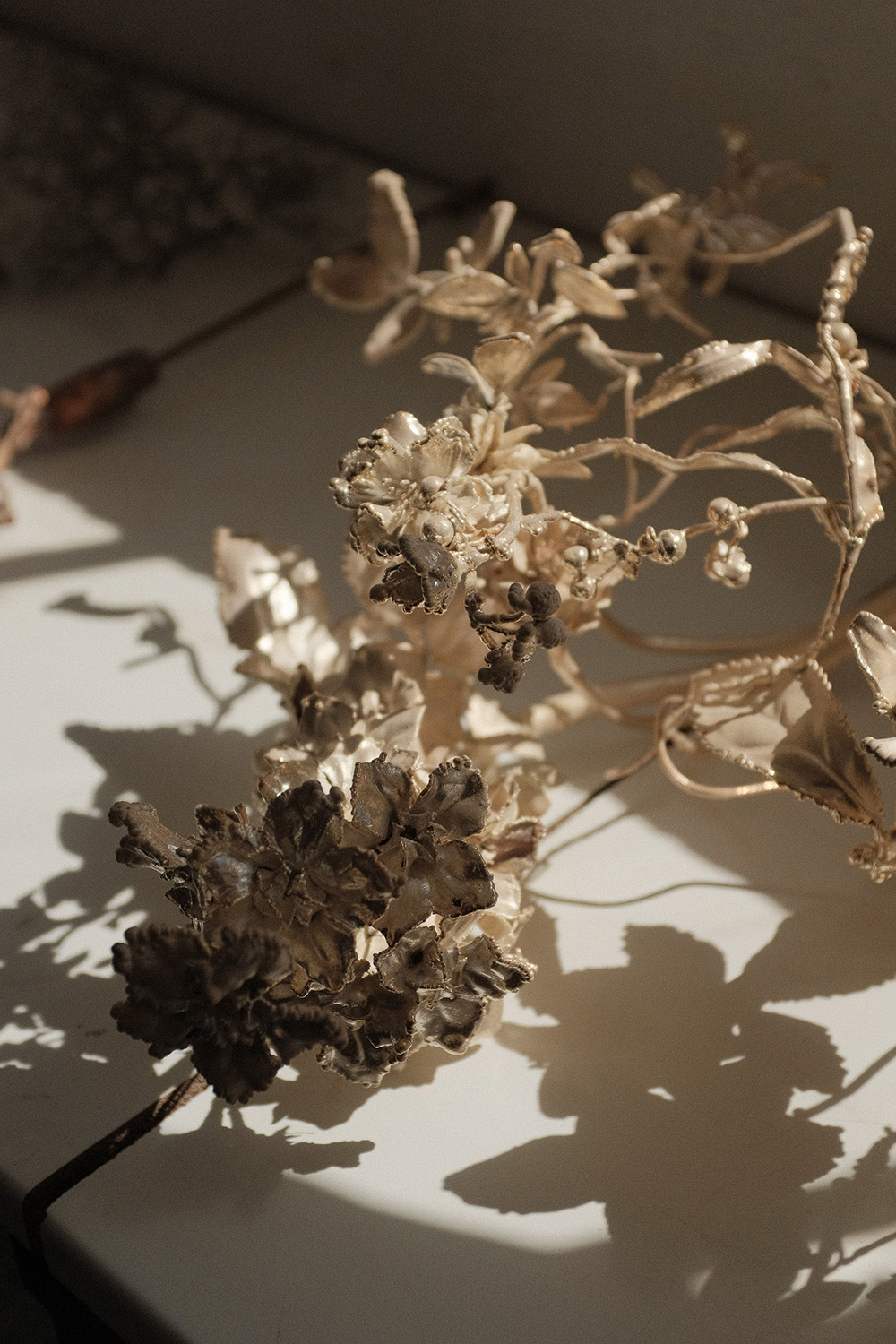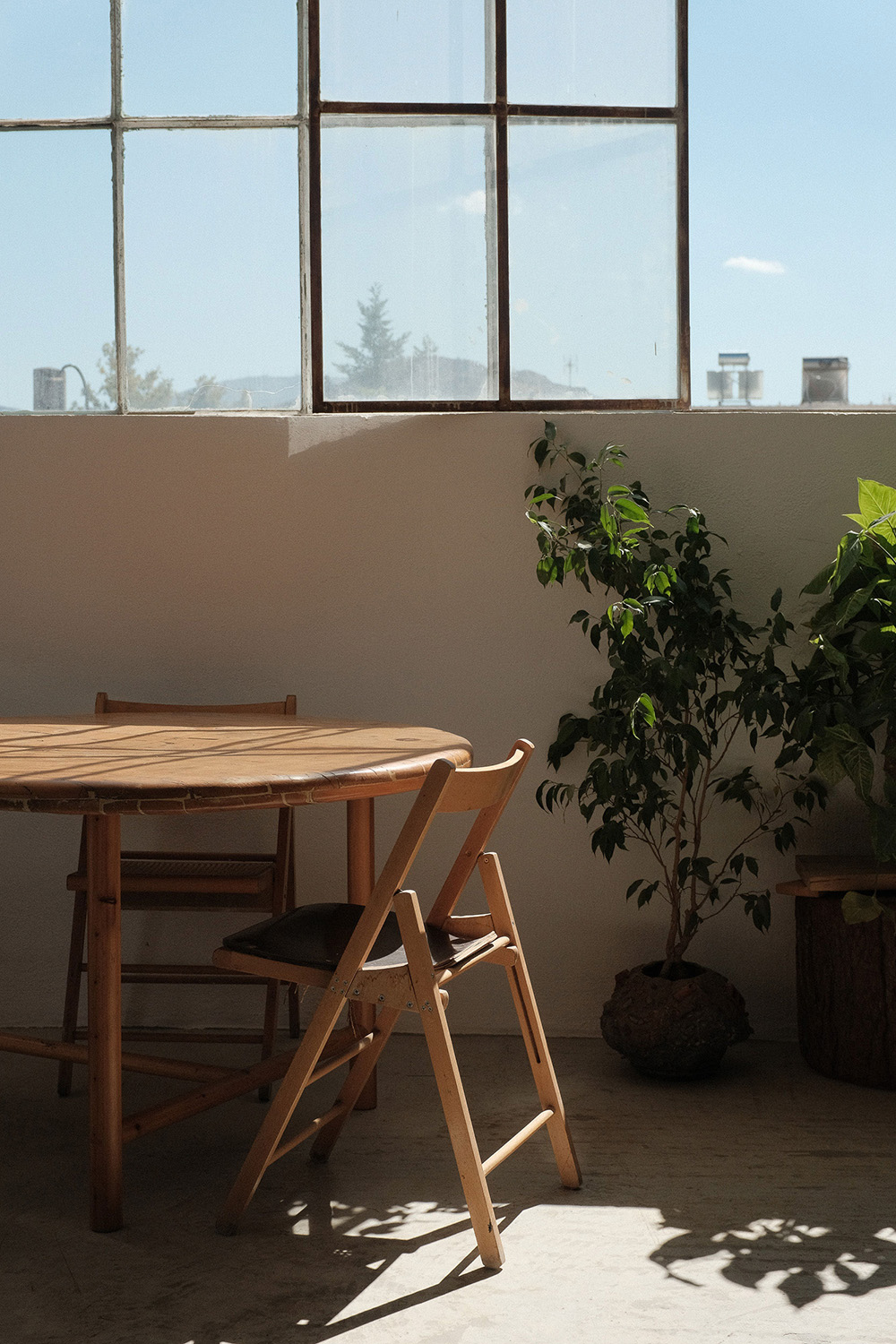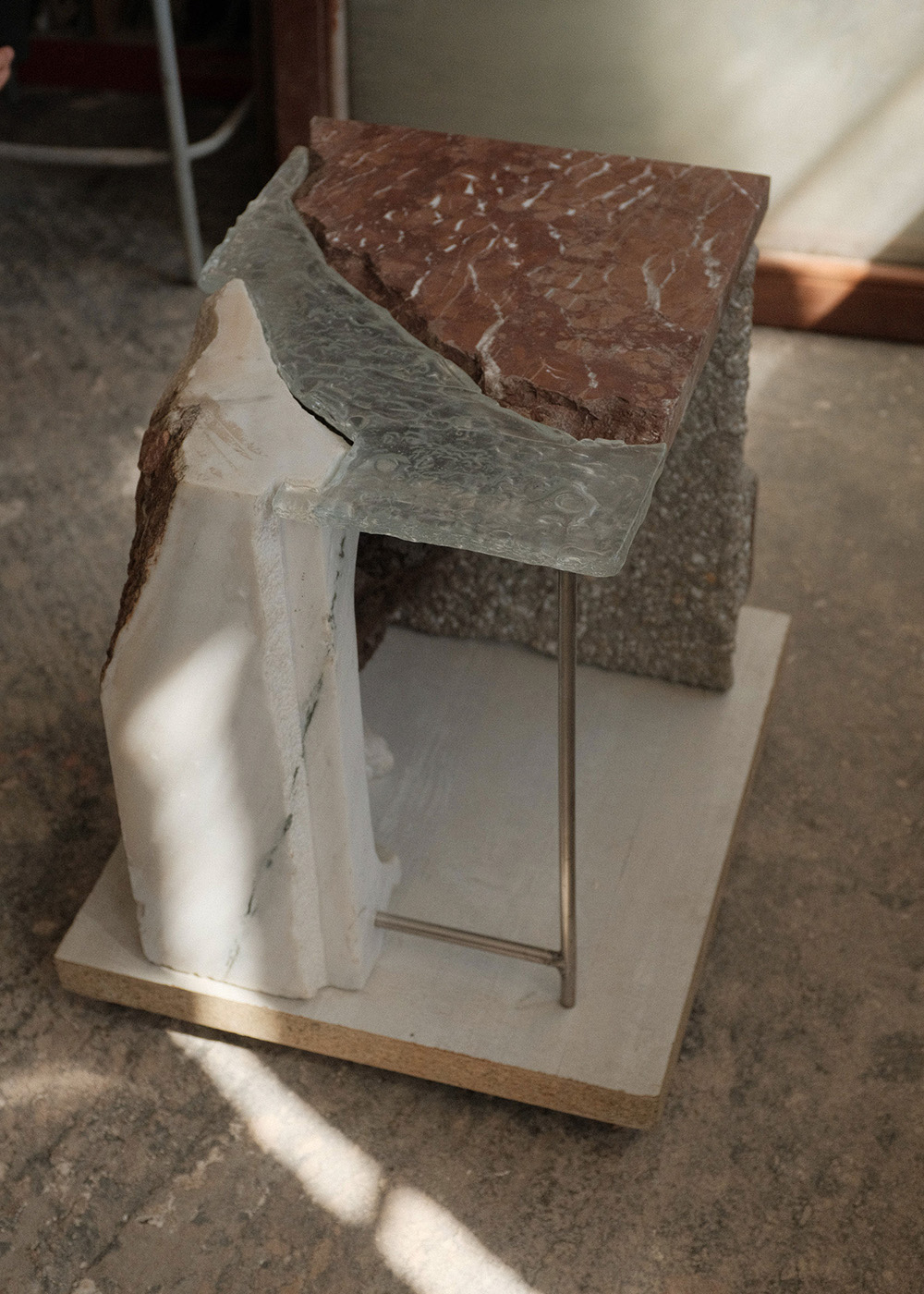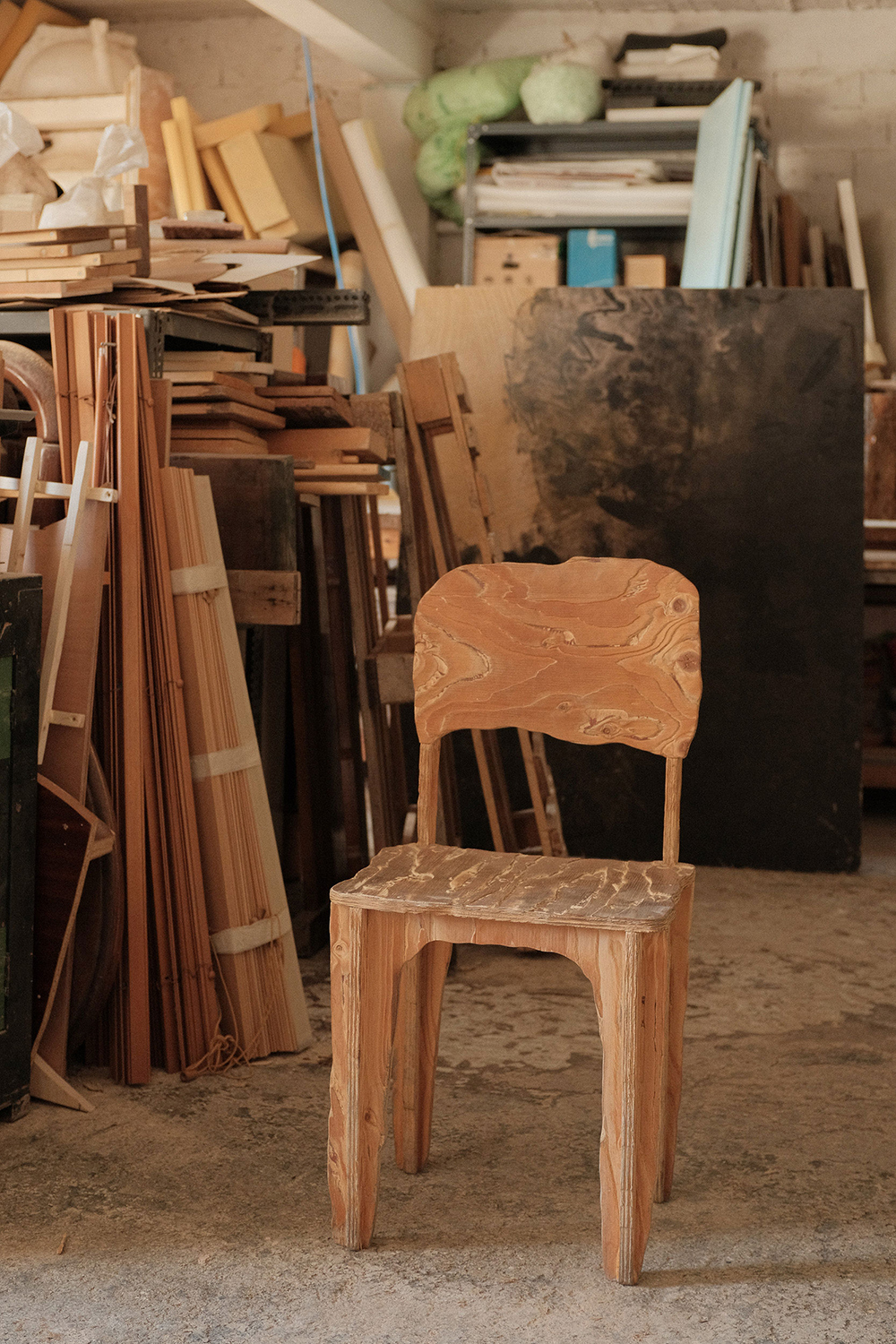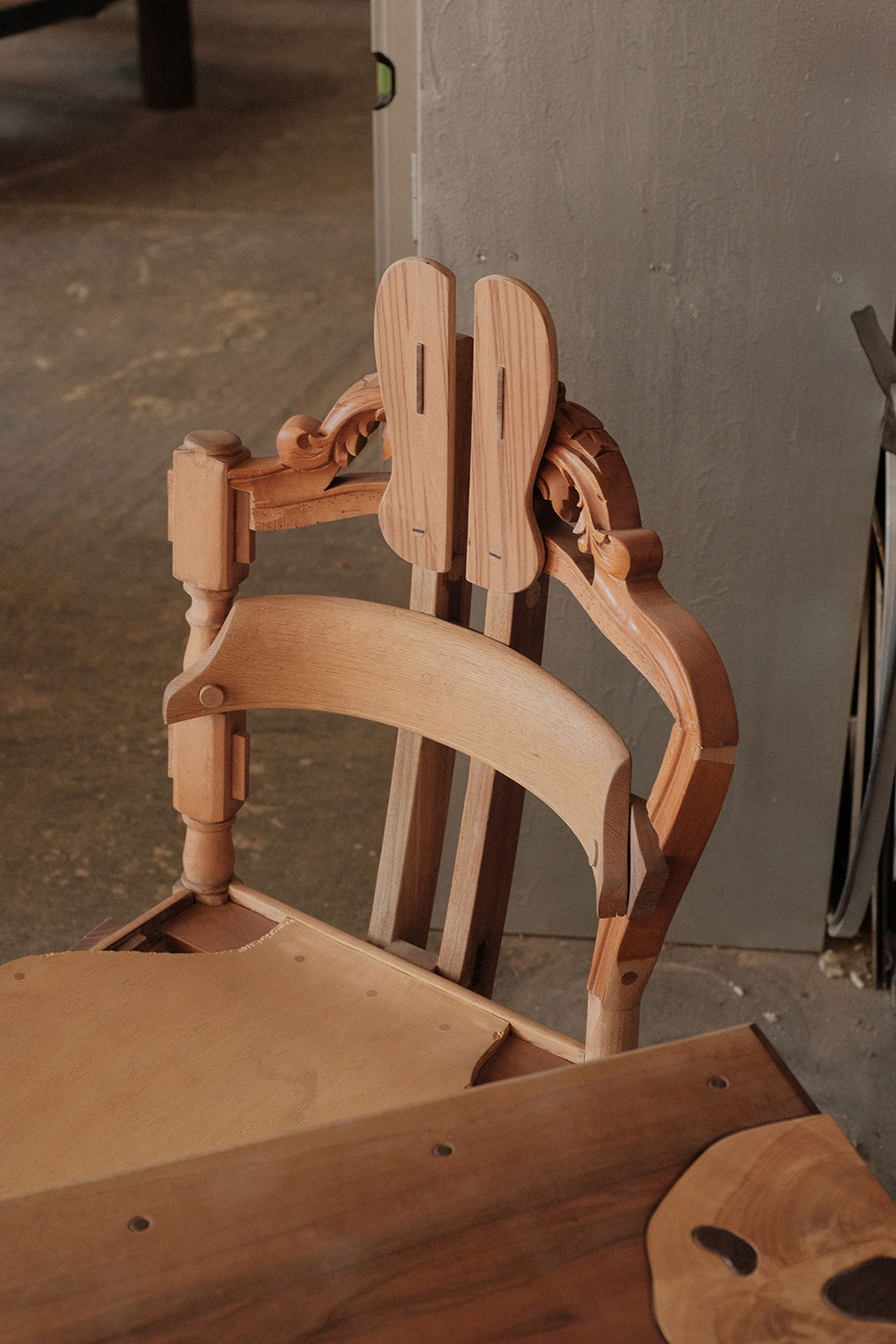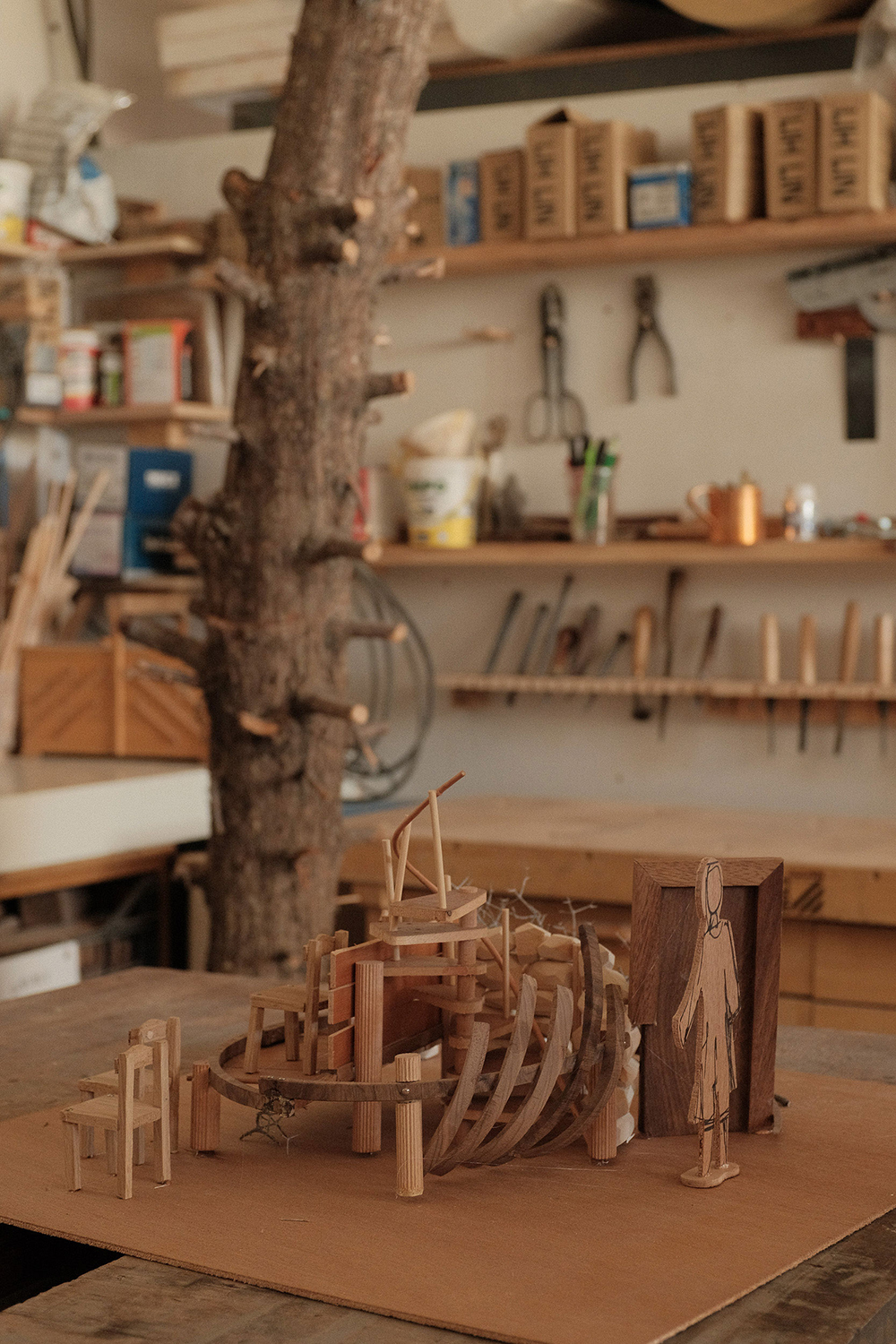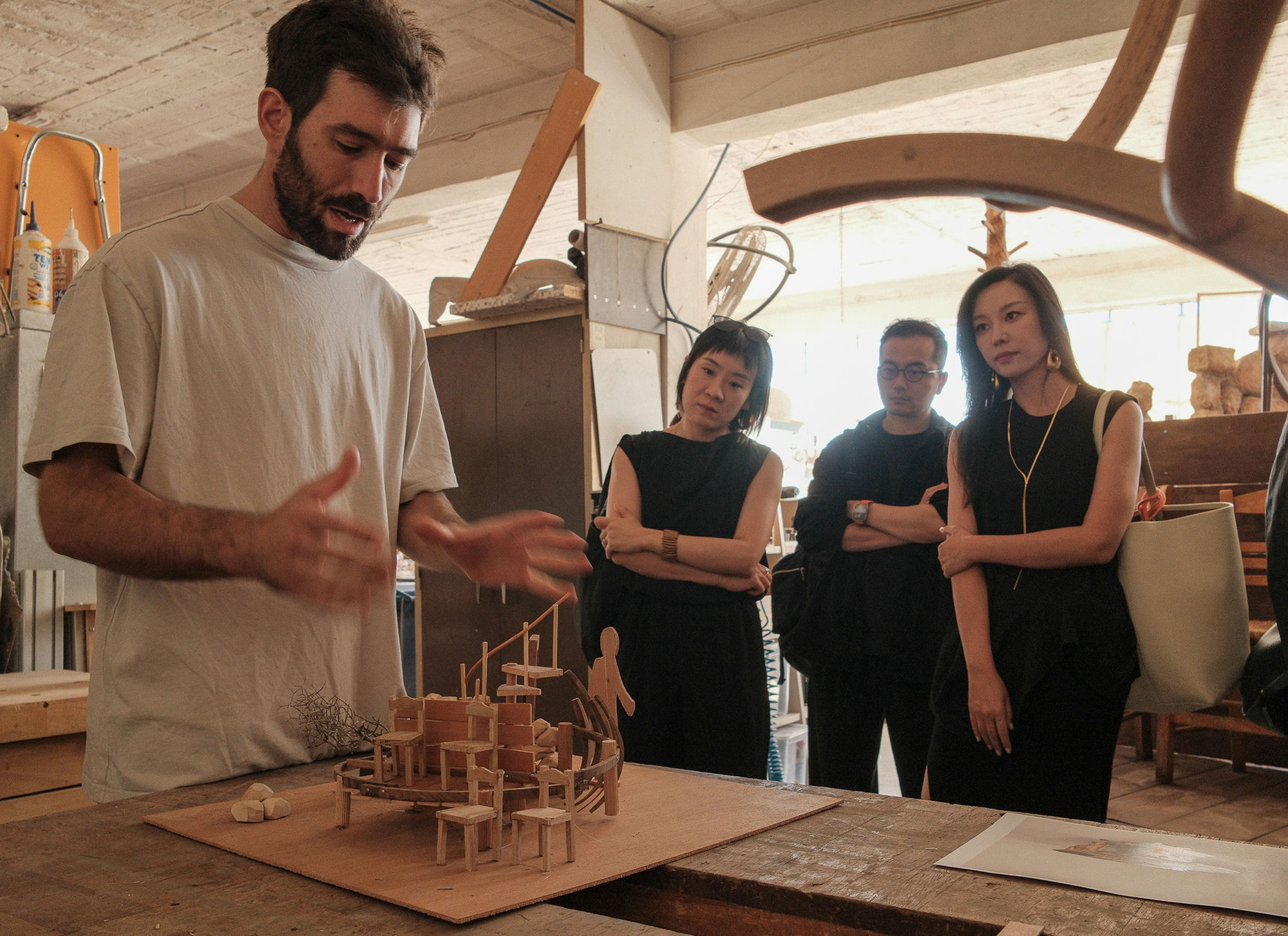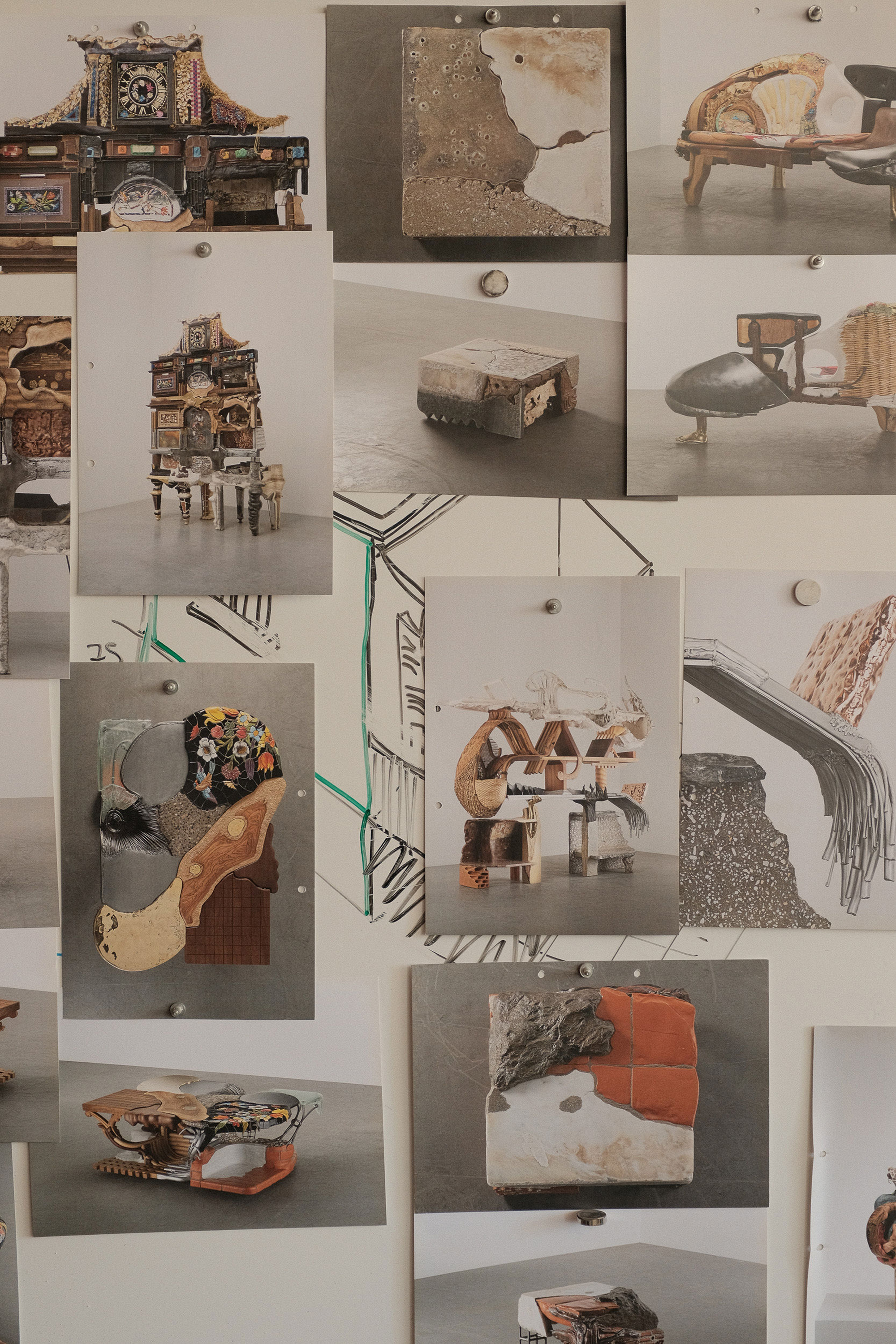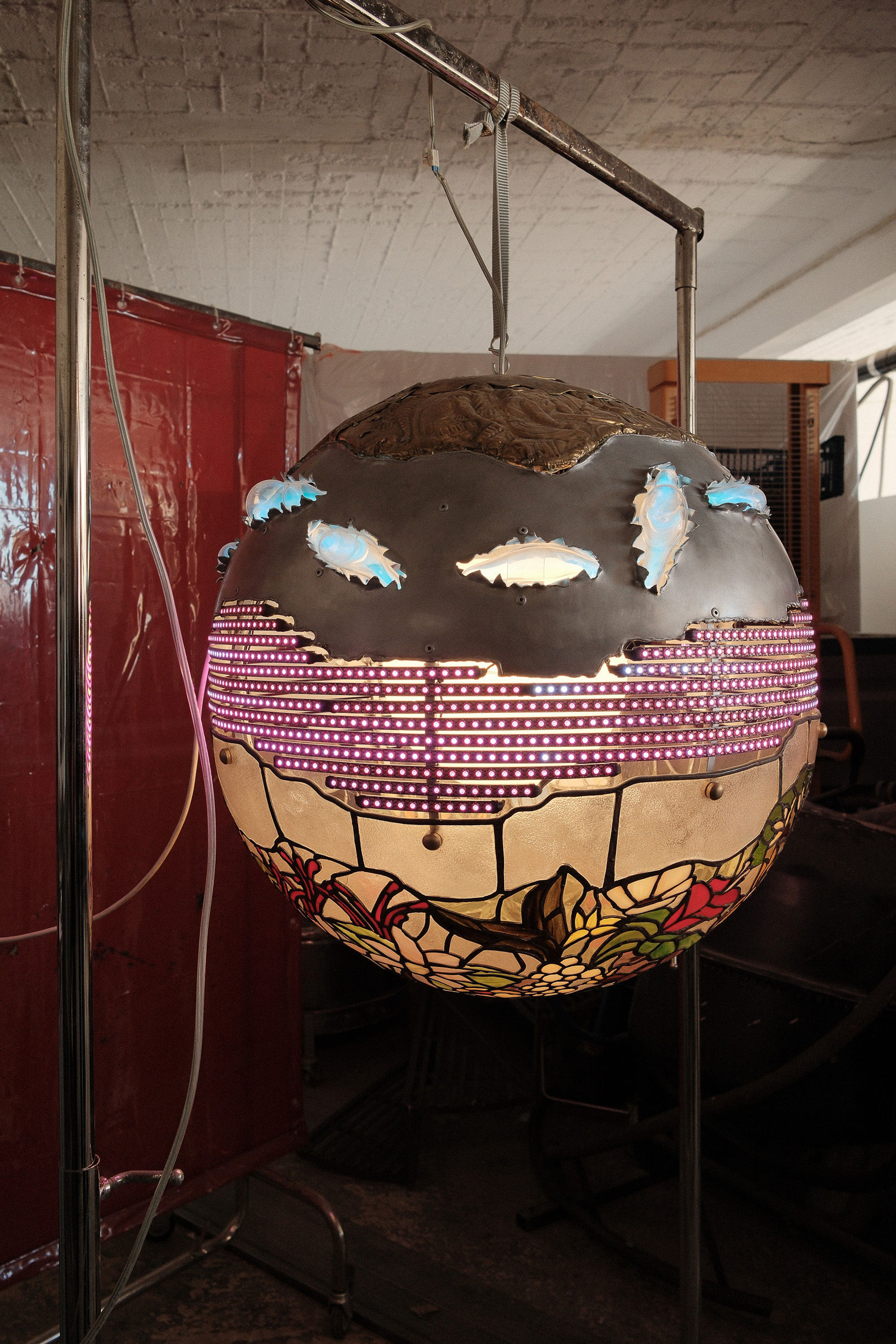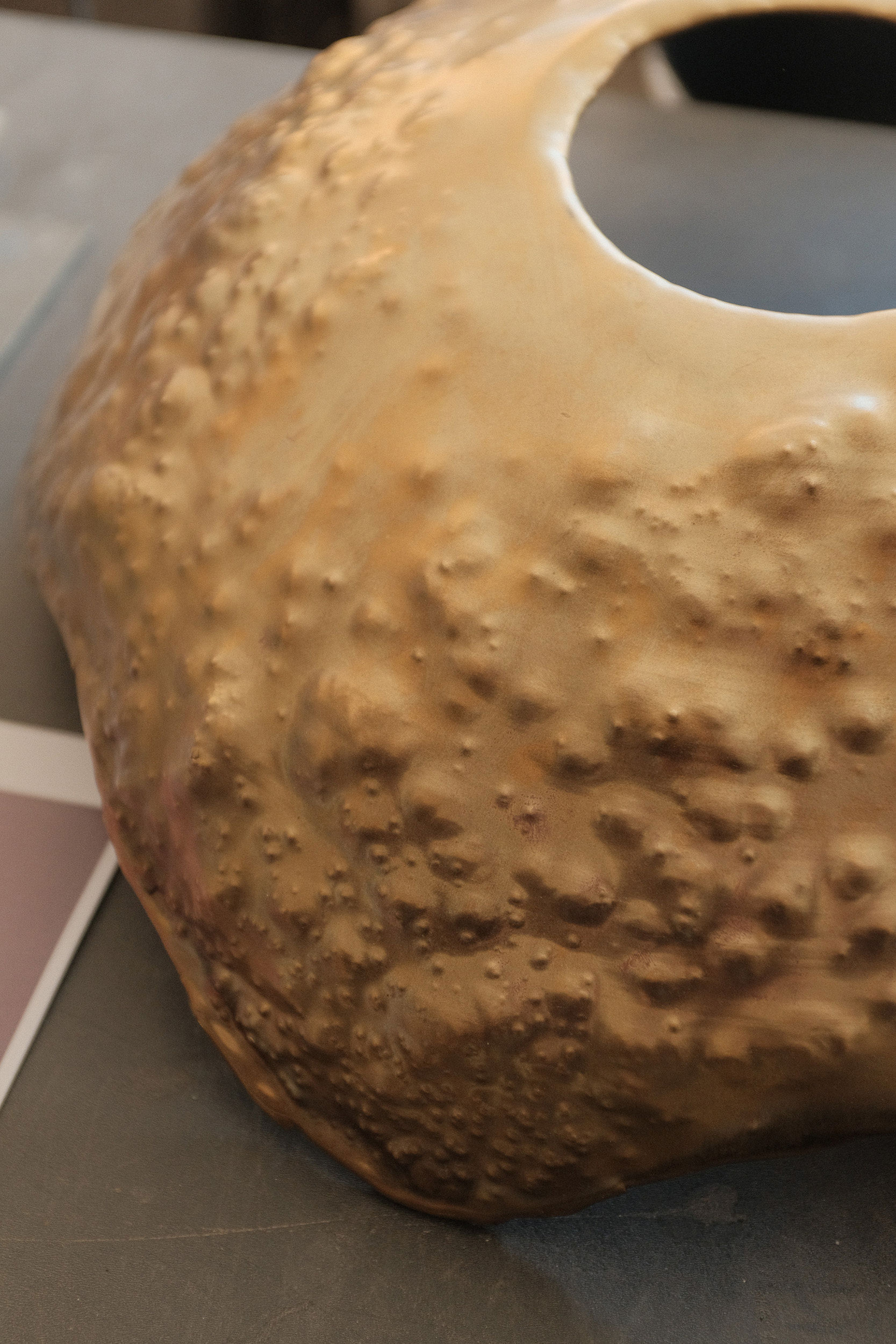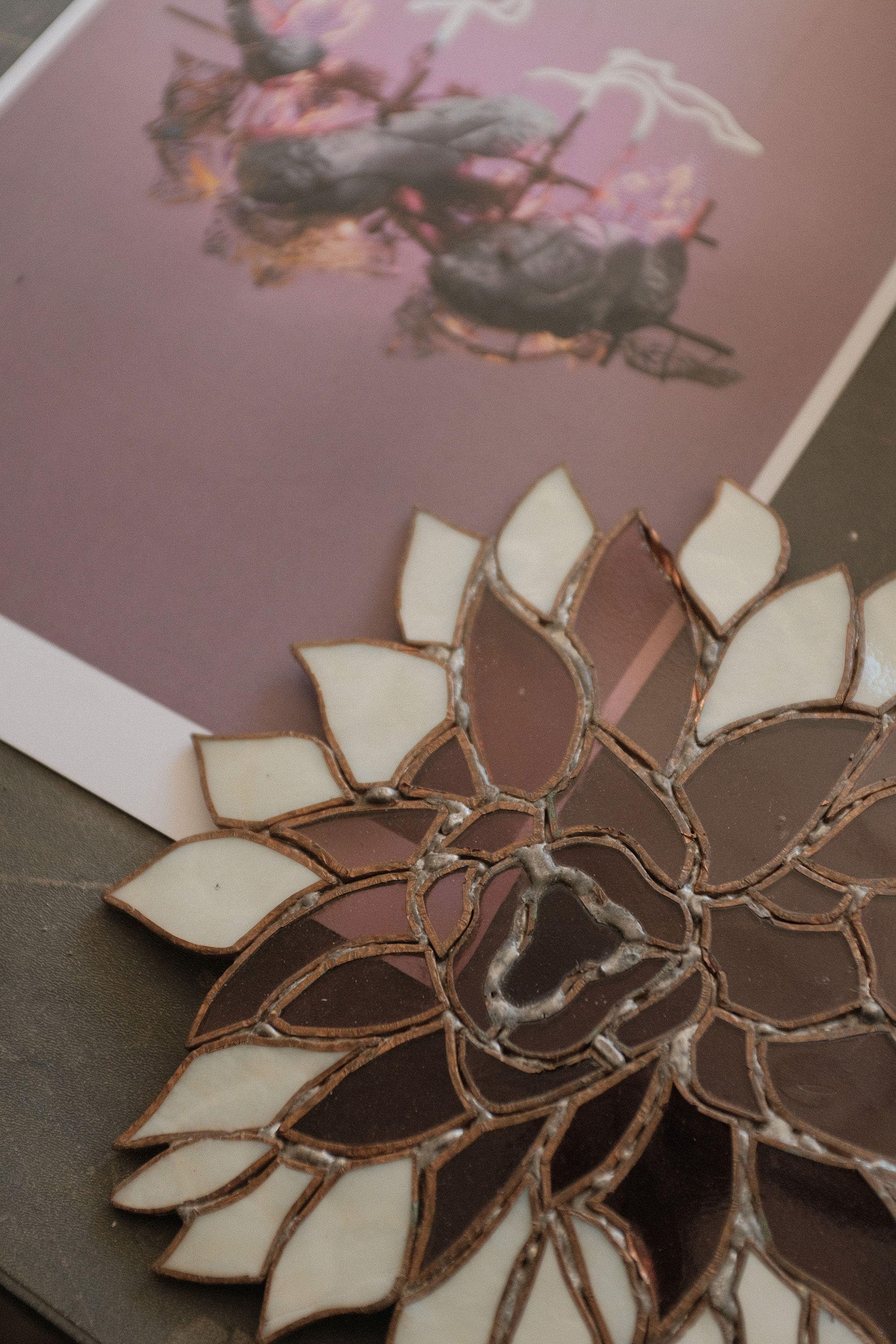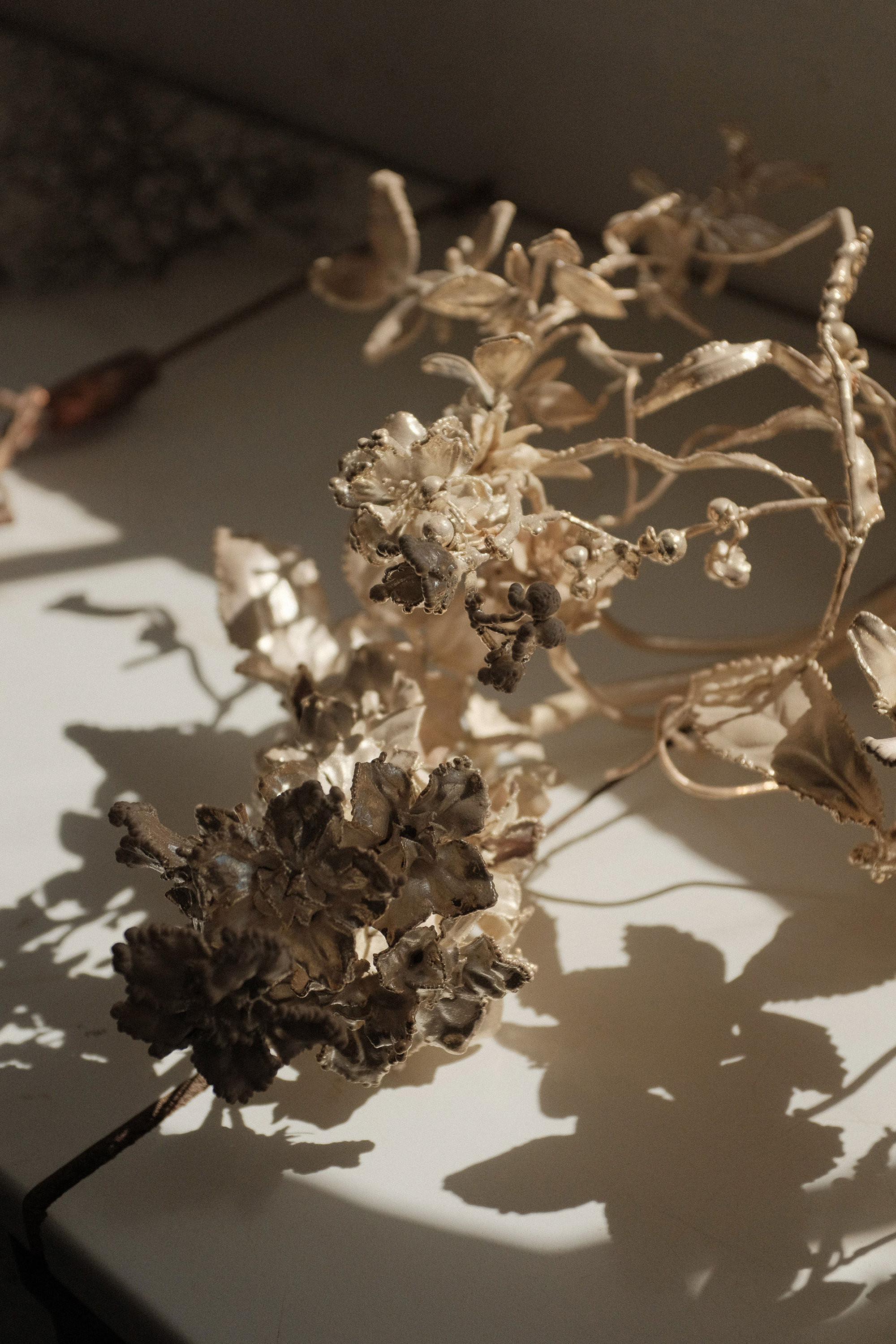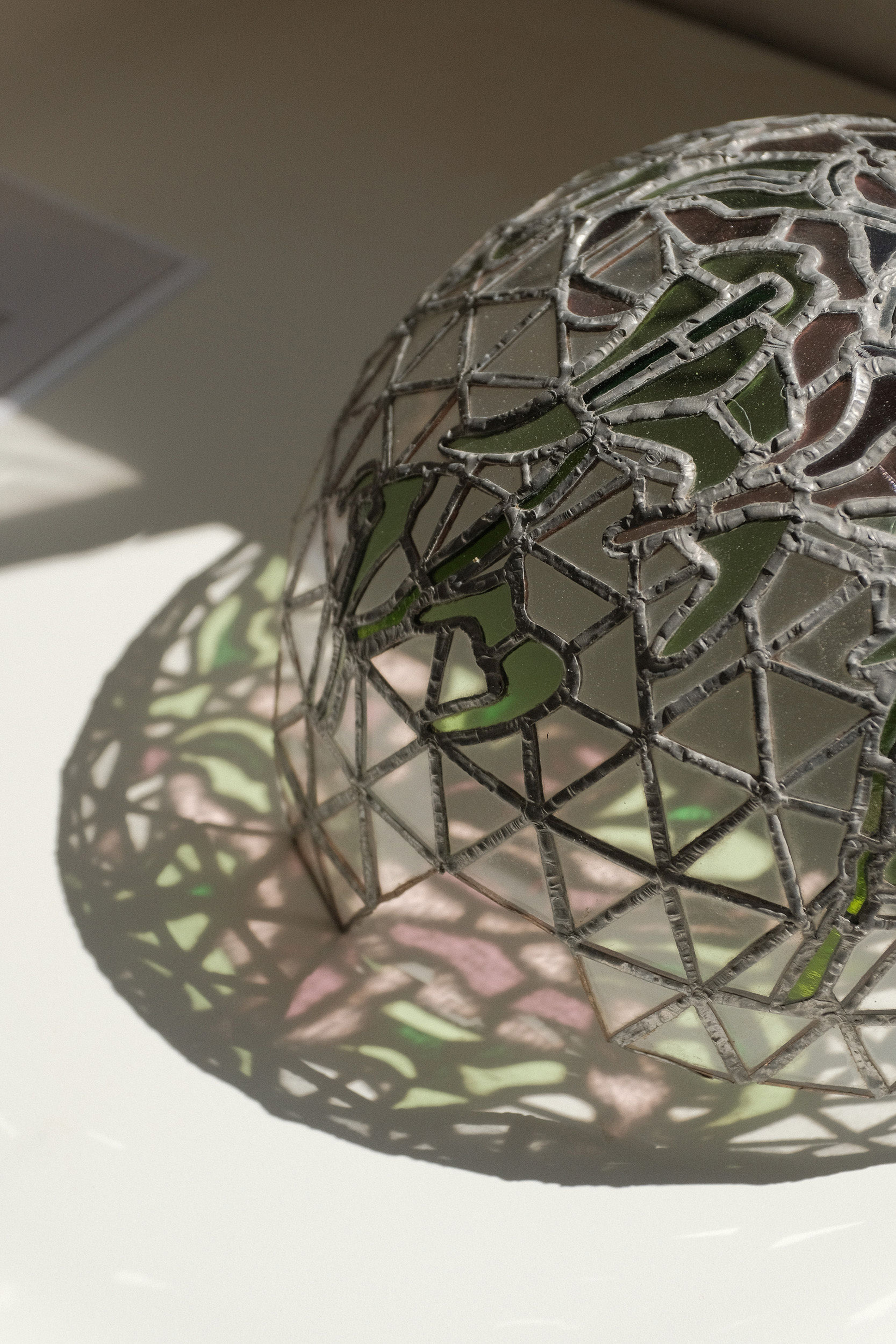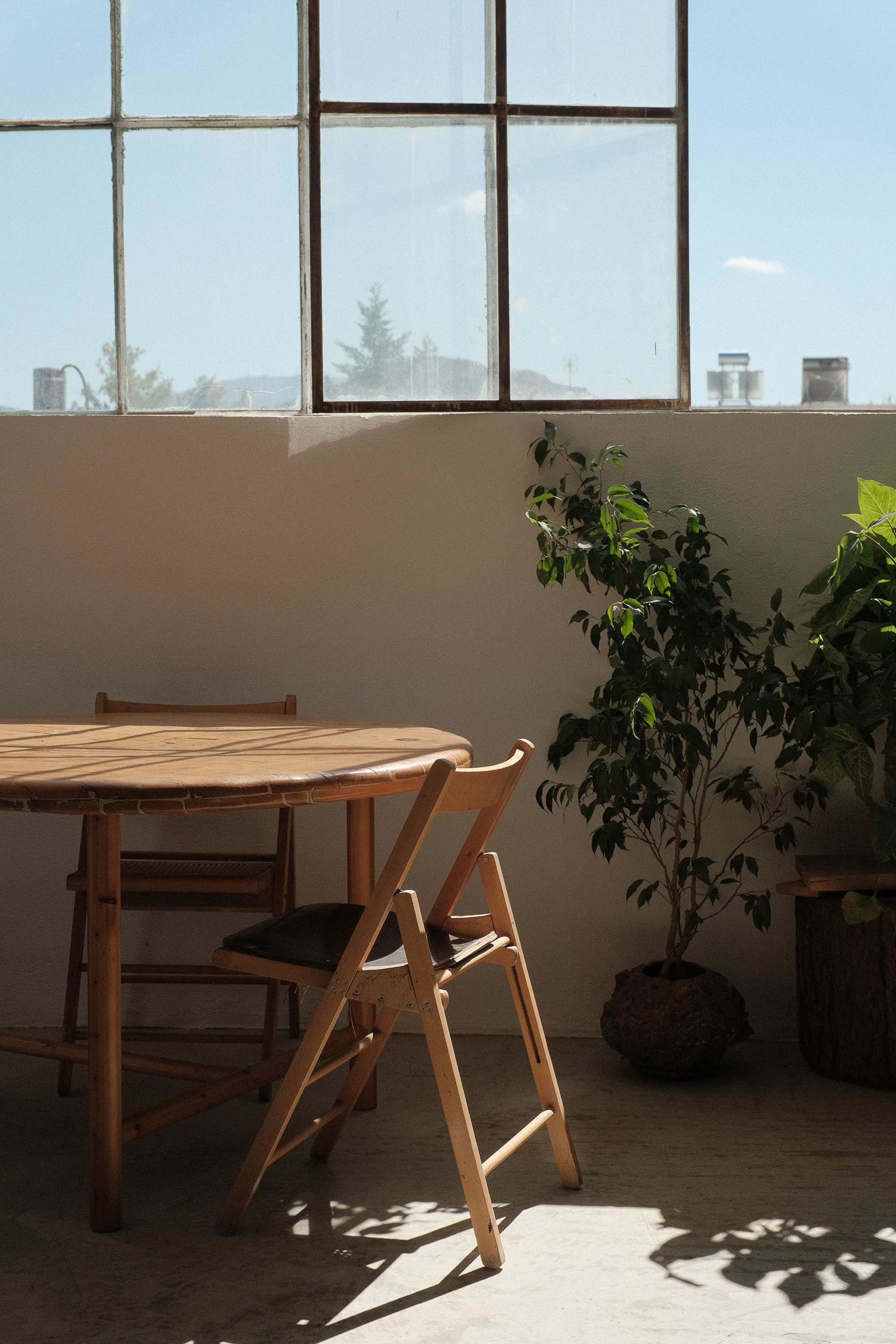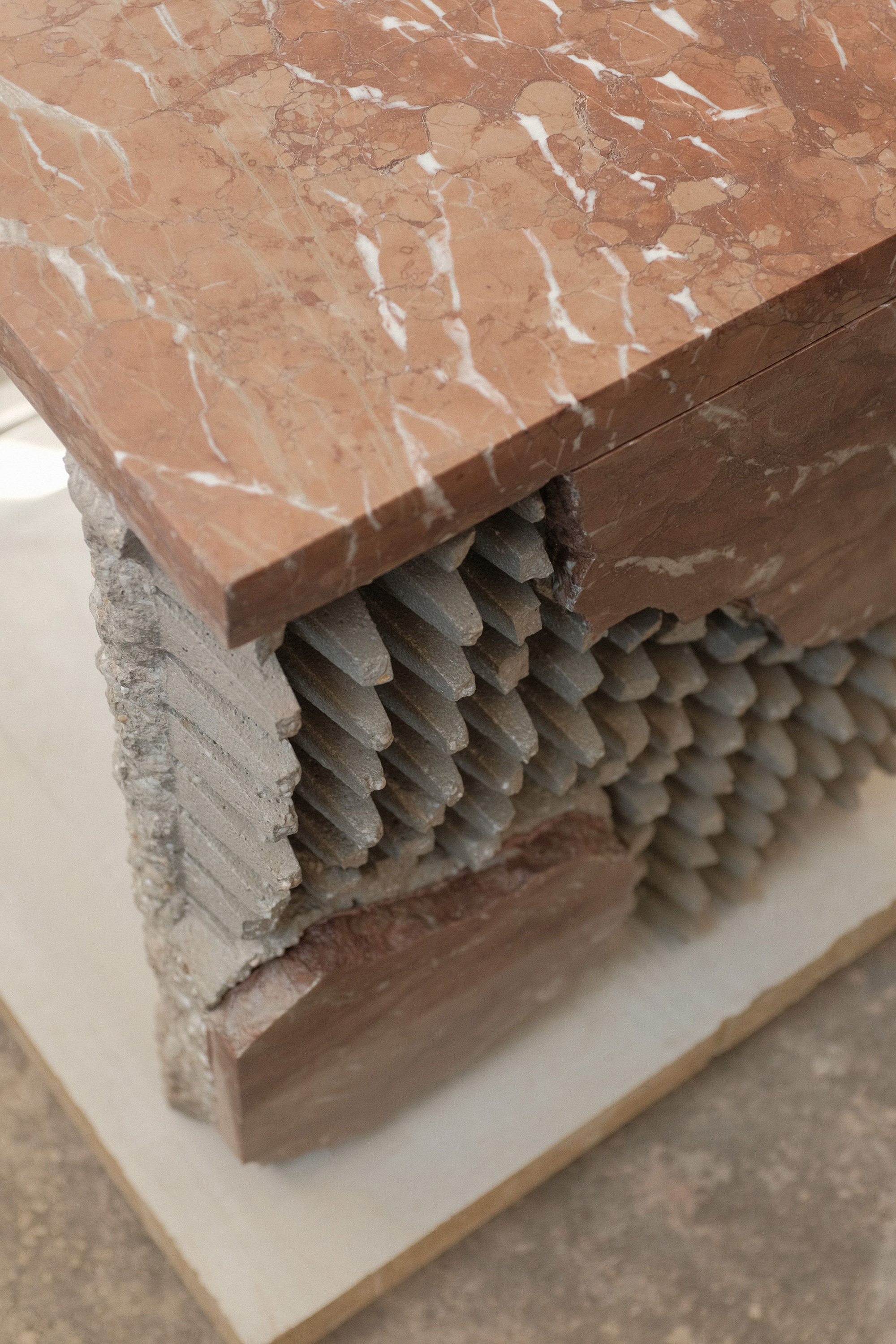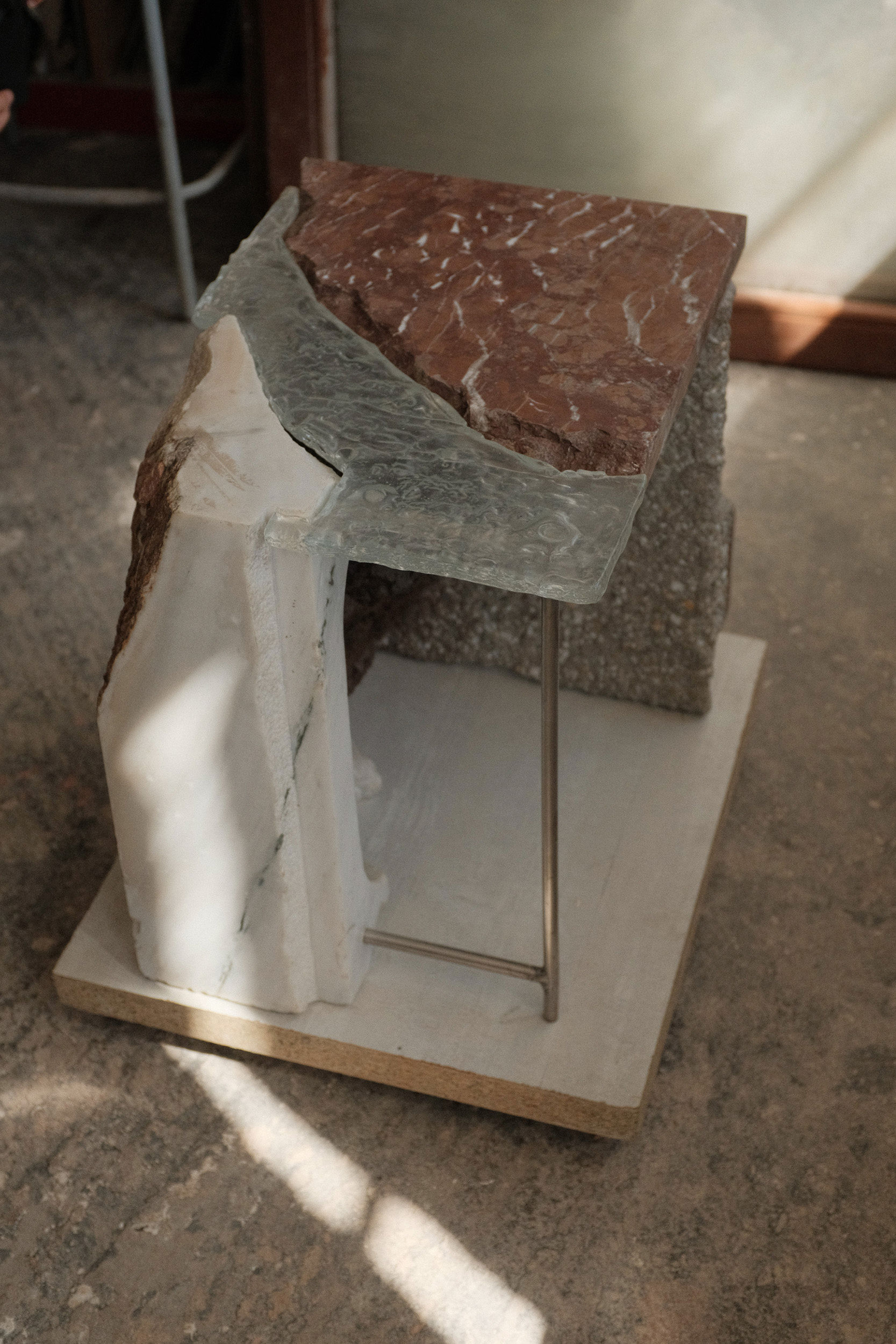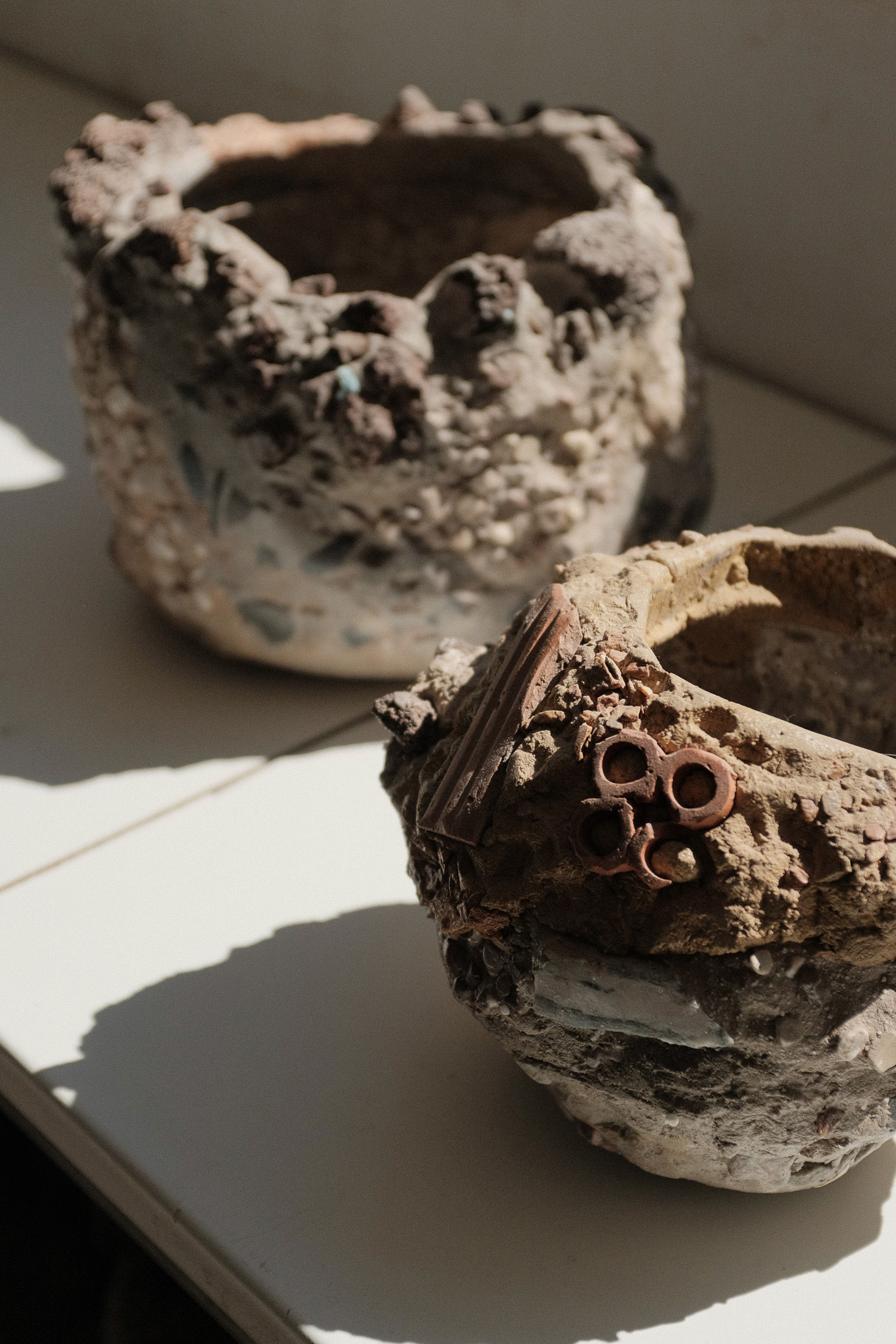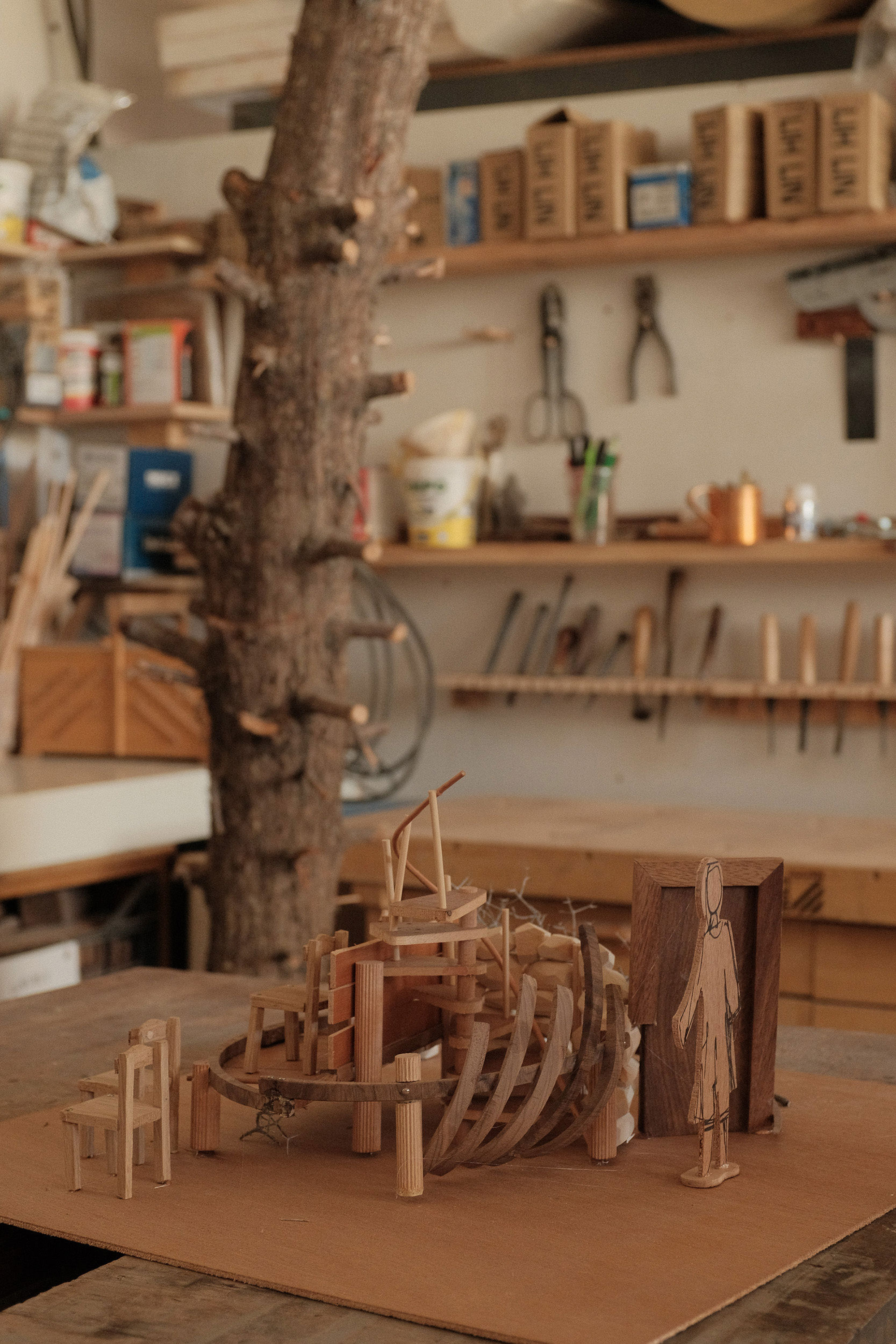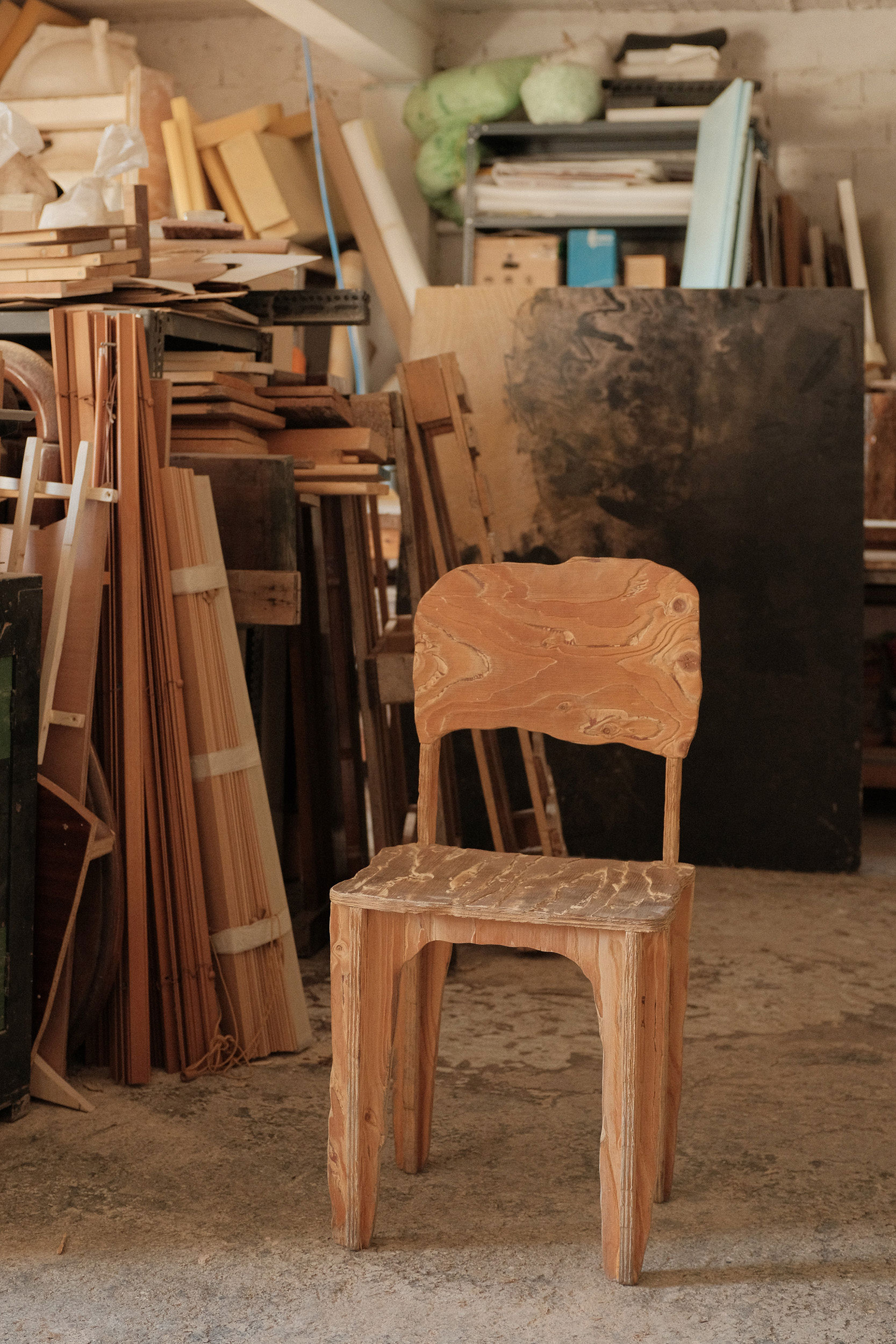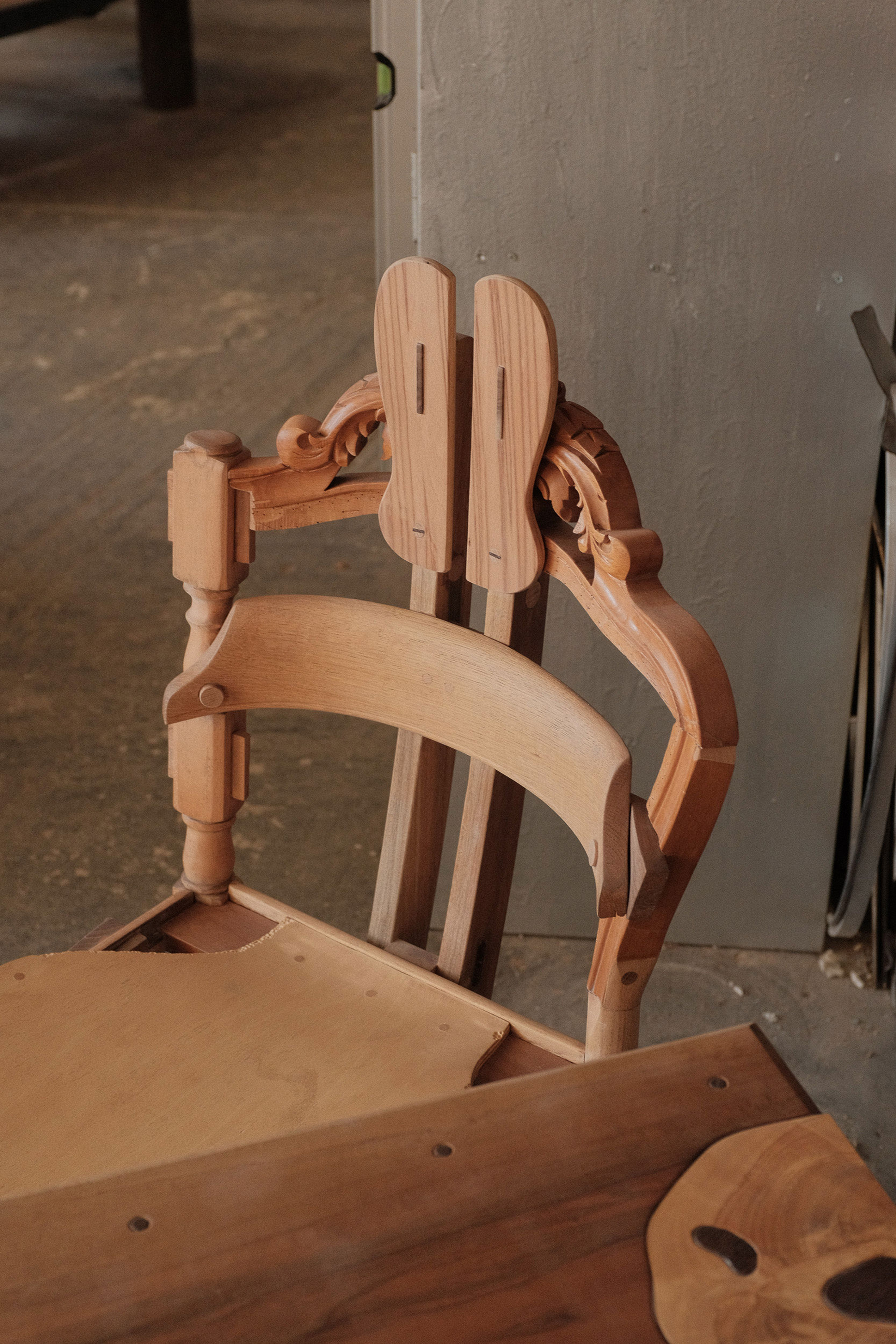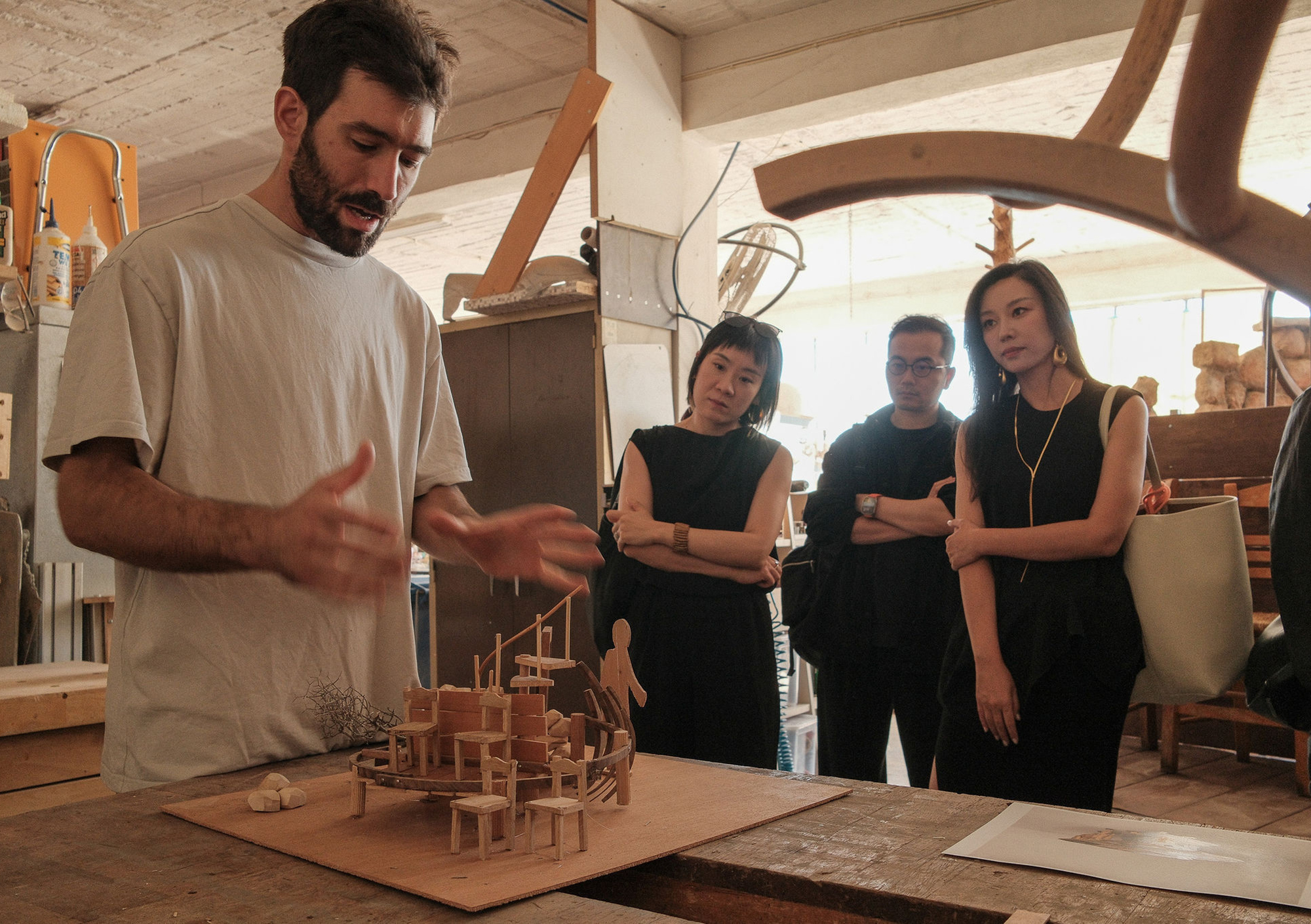Athens in October is embraced by sunlit warmth, much like our first impression of Kostas Lambridis. Standing in the sunlight, he waved us up with vigorous enthusiasm, an unguarded warmth that instantly dissolved any sense of unfamiliarity.
We quickened our pace and arrived at the young Greek artist's studio on the second floor. This is where he practices what he calls “material egalitarianism,” a creative realm where copper and plastic, antique wood carvings and automotive waste collide, merge, and spark inspiration.
Beyond the blue iron door, the earthy fragrance of aged wood mingled with the sharp, clean scent of metal polish. The studio felt like a living colony of materials, each corner dedicated to a different essence: metal, stone, plastic, and wood. In the woodworking area, logs over two meters tall stood solemnly, while meticulously carved blocks awaited assembly. The metal section displayed components with strangely textured surfaces. Marble in the stone zone gleamed with a cool light, and plastic works cast colorful shadows across tabletops. “It doesn't matter to me whether something was found in the trash or cost a thousand euros—I treat it with the same respect, or lack thereof,” Kostas remarked.
After eight years working at Nacho Carbonell's studio, Kostas returned to his hometown to establish his own practice. His background in engineering and art fuels his passion for materials and construction techniques. In his open narratives, he consciously or unconsciously merges diverse elements—“various materials and shapes, reorganized and elevated”—until a work of art is born.
“I want to challenge the idea that preciousness must come from scarce materials,” Kostas explained, pointing to *Elemental Cabinet*, the graduation project that brought him recognition in the art world. The piece ironically replicates Florence's “most expensive Baroque furniture” while questioning the boundaries between “original” and “reproduction.” It brings together decorative elements from ancient and modern craftsmanship, blending noble and humble materials—from bronze and ceramics to embroidery and melted remnants of old plastic chairs—culminating in a work that defies tradition.
